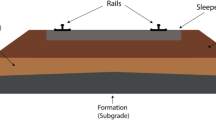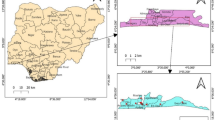Abstract
The presence of metallic particle is the most adversely influencing defect in gas-insulated substation (GIS). These particles may move freely in the GIS enclosure or adhere to the solid spacer surface due to electrostatic forces. The later can initiate partial discharges (PDs) in the weakest area, i.e., the triple junction. Therefore, the investigation of PD characteristics and particle size and position on the spacer surface is the significant step toward the reliability improvement of the GIS equipments. This paper presents the use of the back-propagation artificial neural network (BP-ANN) technique supplemented with principal component analysis (PCA) as the PD pattern recognition tools for the estimation of the particle size (length) and position on the spacer surface in a simulated GIS. PD-featured acquisition is performed by collecting their fingerprints from the measurements carried out using IEC 60270 method. The role of PCA is to reduce the dimension of the collected PD fingerprint data. The obtained results show that PCA can significantly improve the BP-ANN performance in terms of execution time. Without PCA, 88 and 92 % accuracies can be achieved when BP-ANN is implemented with 1 and 2 hidden layers, respectively. With the integration of PCA, execution times are greatly reduced while retaining fairly high accuracy of 88 % in both cases. Thus, the proposed method is a contribution to development of the tool for improving the reliability of GIS.













Similar content being viewed by others
References
Anis H (1990) Gas-insulated switchgear. In: Khalifa M (ed) High voltage engineering: theory and practice. Marcel Dekker Inc, New York, pp 243–273
Bolin P (2007) Gas-insulated substations. In: McDonald JD (ed) Electric power substations engineering. Taylor & Francis Group, LLC, Boca Raton
Jain HS (2007) Gas-insulated sub-station/switchgear (GIS). In: Limited BHE (ed) Handbook of switchgears. McGraw-Hill, New York
Morcos MM et al (2000) Insulation integrity of GIS/GITL systems and management of particle contamination. IEEE Electr Insul Mag 16(5):25–37
Okubo H et al (2008) Partial discharge detection techniques under the condition of metallic particle adhering to solid spacer in \({\rm SF}_{6}\). In: Annual report conference on electrical insulation and dielectric phenomena (CEIDP), 26–29 Oct, pp 395-399
Kanako N et al (2008) Particle size identification in GIS by ultra high speed measurement of partial discharge. In: International conference on condition monitoring and diagnosis (CMD), 21–24 April, pp 443–447
Hayakawa N et al (2008) Dependence of partial discharge characteristics at spacer surface on particle size in \({\rm SF}_{6}\) gas insulated system. In: International conference on condition monitoring and diagnosis (CMD), 21–24 April, pp 46–50
Negara Y et al (2007) AC particle-triggered corona discharge in low pressure \({\rm SF}_{6}\) gas. IEEE Trans Dielectr Electr Insul 14(1):91–100
Sahoo NC, Salama MMA, Bartnikas R (2005) Trends in partial discharge pattern classification: a survey. IEEE Trans Dielectr Electr Insul 12(2):248–264
Kreuger FH, Gulski E, Krivda A (1993) Classification of partial discharges. IEEE Trans Electr Insul 28(6):917–931
Hozumi N, Okamoto T, Imajo T (1992) Discrimination of partial discharge patterns using a neural network. IEEE Trans Electr Insul 27(3):550–556
Suzuki H, Endoh T (1992) Pattern recognition of partial discharge in XLPE cables using a neural network. IEEE Trans Electr Insul 27(3):543–549
Kranz HG (1993) Diagnosis of partial discharge signals using neural networks and minimum distance classification. IEEE Trans Electr Insul 28(6):1016–1024
Gulski E, Krivda A (1993) Neural networks as a tool for recognition of partial discharges. IEEE Trans Electr Insul 28(6):984–1001
Jung SY et al (2007) Discrimination of insulation defects in a gas insulated switchgear (GIS) by use of a neural network based on a chaos analysis of partial discharge (CAPD). J Electr Eng Technol 2(1):118–122
Khan Y, Budiman FN, Beroual A, Malik NH, Al-Arainy AA (2013) The estimation of size and position of contaminating particle adhering to the insulating spacer surface in gas insulated systems. Eur Phys J Appl Phys 62:20801p1–20801p11
Budiman FN, Khan Y, Beroual A, Malik NH, Al-Arainy AA (2013) Utilization of artificial neural network for the estimation of size and position of metallic particle adhering to spacer in GIS. IEEE Trans Dielectr Electr Insul 20(6):2143–2151
Danikas MG, Gao N, Aro M (2003) Partial discharge recognition using neural networks: a review. Electr Eng (Archiv fur Elektrotechnik) 85(2):87–93
Gulski E, Kreuger FH (1992) Determination of discharge sources by analysis of discharge quantities as a function of time. In: Conference record of the IEEE international symposium on electrical insulation, 7–10 Jun, pp 397–400
Karhunen J, Joutsensalo J (1995) Generalizations of principal component analysis, optimization problems and neural networks. Neural Netw 8(4):549–562
Babnik T, Aggarwal R, Moore P (2007) Data mining on a transformer partial discharge data using the self-organizing map. IEEE Trans Dielectr Electr Insul 14(2):444–452
Lai KX, Phung BT, Blackburn TR (2007) Partial discharge analysis using PCA and SOM. In: IEEE Lausanne Power Tech, 1–5 July, pp 2133–2138
Nguyen D, Widrow B (1990) Improving the learning speed of 2-layer neural networks by choosing initial values of the adaptive weights. In: International joint conference on neural networks, vol 3, pp 21–26
Yu H, Wilamowski BM (2011) Levenberg–Marquardt training. In: Industrial electronics handbook, vol. 5—intelligent systems. CRC Press, Boca Raton pp 12-1–12-15
Khan Y, Khan AA, Budiman FN, Beroual A, Malik NH, Al-Arainy AA (2014) Partial discharge pattern analysis using support vector machine for the estimation of size and position of metallic particle adhering to spacer in GIS. Electr Power Syst Res 116:391–398
Acknowledgments
The author would like to extend their sincere appreciation to the Deanship of Scientific Research (DSR) at King Saud University for its funding of this research through the Research Group Project No. RGP-1436-012.
Author information
Authors and Affiliations
Corresponding author
Rights and permissions
About this article
Cite this article
Khan, Y. Partial discharge pattern analysis using PCA and back-propagation artificial neural network for the estimation of size and position of metallic particle adhering to spacer in GIS. Electr Eng 98, 29–42 (2016). https://doi.org/10.1007/s00202-015-0343-4
Received:
Accepted:
Published:
Issue Date:
DOI: https://doi.org/10.1007/s00202-015-0343-4




